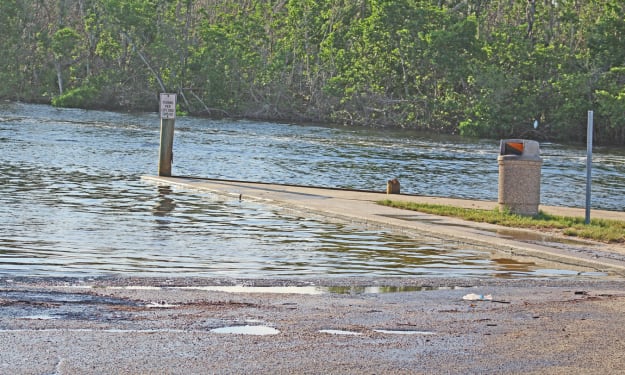
Venomous spiders are among the most feared creatures on the planet, and rightfully so. With their potent toxins and often deadly bites, these eight-legged arachnids inspire both fascination and dread. In this article, we'll delve into the world of spiders and uncover the top ten most venomous species that inhabit various regions across the globe.
Brazilian Wandering Spider (Phoneutria spp.)
Native to South America, particularly Brazil, the Brazilian wandering spider is infamous for its potent venom and aggressive behavior. It is considered one of the most venomous spiders in the world. Its bite can cause intense pain, paralysis, and even death if left untreated.
Sydney Funnel-web Spider (Atrax spp.)
Found in Australia, the Sydney funnel-web spider is notorious for its highly toxic venom. Its bite can lead to severe neurological symptoms, including muscle spasms, respiratory distress, and in some cases, fatalities. Prompt medical treatment is crucial in managing its bites.
Black Widow Spider (Latrodectus spp.)
Widely distributed across the globe, black widow spiders are known for their distinctive red hourglass marking and potent neurotoxic venom. While fatalities are rare, their bites can cause severe pain, muscle cramps, and other systemic symptoms.
Redback Spider (Latrodectus hasselti)
A close relative of the black widow, the redback spider is native to Australia and is infamous for its venomous bite. Like its cousin, it produces neurotoxins that can cause significant pain and discomfort, with potential systemic effects if left untreated.
Mouse Spider (Missulena spp.)
Also found in Australia, mouse spiders are named for their burrowing behavior and prey preference. While their venom is potent, bites are rare, and fatalities are uncommon. However, their bites can cause local pain, swelling, and other symptoms.
Brown Recluse Spider (Loxosceles reclusa)
Native to the United States, the brown recluse spider is known for its necrotic venom, which can cause tissue damage and ulceration at the site of the bite. While fatalities are rare, medical attention is necessary to prevent complications.
Six-eyed Sand Spider (Sicarius spp.)
Inhabiting deserts and sandy regions of Africa and South America, the six-eyed sand spider possesses a potent cytotoxic venom that can cause tissue necrosis and severe systemic effects. Bites are rare but can be medically significant.
Brazilian Wandering Spider (Phoneutria spp.)
As mentioned earlier, the Brazilian wandering spider deserves a second mention due to its notoriety as one of the most venomous spiders globally. Its potent venom and aggressive nature make encounters with this spider particularly dangerous.
Australian Tarantula (Selenocosmia crassipes)
Contrary to popular belief, not all tarantulas are harmless. The Australian tarantula, found in various regions of Australia, possesses venom capable of causing significant pain and discomfort. While not typically life-threatening, its bite can be medically significant.
Yellow Sac Spider (Cheiracanthium spp.)
Widely distributed across the globe, yellow sac spiders are known for their cytotoxic venom, which can cause local pain, redness, and swelling. While not considered highly venomous, their bites can lead to discomfort and medical attention may be necessary.
In conclusion, venomous spiders are a fascinating yet potentially dangerous aspect of the natural world. While encounters with these creatures are rare, it's essential to exercise caution and respect when interacting with them to minimize the risk of bites and adverse reactions.
FAQs about venomous spiders:
Are all spiders venomous?
While all spiders produce venom, not all species are considered medically significant to humans. Many spiders possess venom that is relatively harmless to humans and is primarily used to subdue their prey.
How common are spider bites?
Spider bites are relatively rare, as most spiders are not aggressive towards humans and will only bite if they feel threatened or trapped. Additionally, many spider bites go unnoticed or cause mild symptoms that do not require medical attention.
What should I do if bitten by a venomous spider?
If bitten by a venomous spider, it's essential to remain calm and seek medical attention immediately. While many spider bites result in mild symptoms, some species can cause severe reactions that require prompt treatment.
How can I prevent spider bites?
To reduce the risk of spider bites, it's important to avoid provoking or handling spiders, especially if you are unsure of their species. Additionally, take measures to seal cracks and crevices in your home to prevent spiders from entering, and shake out clothing and shoes before wearing them.
Are spider bites always fatal?
Fatalities from spider bites are extremely rare, with most bites causing mild symptoms that resolve on their own or with basic first aid. However, certain species of spiders, such as the Sydney funnel-web spider and Brazilian wandering spider, have venom that can be potentially life-threatening if left untreated. Prompt medical attention is crucial in such cases.





Comments
There are no comments for this story
Be the first to respond and start the conversation.